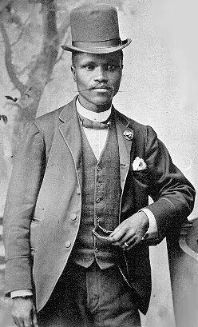Enoch Sontonga
Enoch Sontonga, from the Mpinga clan, of the Xhosa nation, was born in the Eastern Cape in about 1873. It is believed that he received training as a teacher at Lovedale Institution and was then sent to a Methodist Mission school in Nancefield, near Johannnesburg. He was also a choirmaster and a photographer. He married Diana Mgqibisa, the daughter of a prominent minister in the African Methodist Episcopal Church. She died in 1929, in Johannesburg.
Sontonga died at the age of 32. The sources differ about the year of his death, ranging from 1897 to 1904. It has since been established that he died on 18 April 1905.
Enoch Mankayi Sontonga wrote the first verse and chorus and also composed the music in 1897. It was first sung in public in 1899 at the ordination of Rev Boweni, a Shangaan Methodist Minister.
Sontonga's choir as well as other choirs sang this song around Johannesburg and Natal. This song made a strong impression on all audiences. On 8 January 1912, at the first meeting of the South African Native National Congress (SANNC), the forerunner of the African National Congress, it was immediately sung after the closing prayer. In 1925 the ANC officially adopted it as a closing anthem for its meetings.
The song spread beyond the borders of South Africa and has been translated and adapted into a number of other languages. It is still the national anthem of Tanzania and Zambia and has also been sung in Zimbabwe, Namibia and South Africa for many years. In 1994 it became part of South Africa's national anthem.
